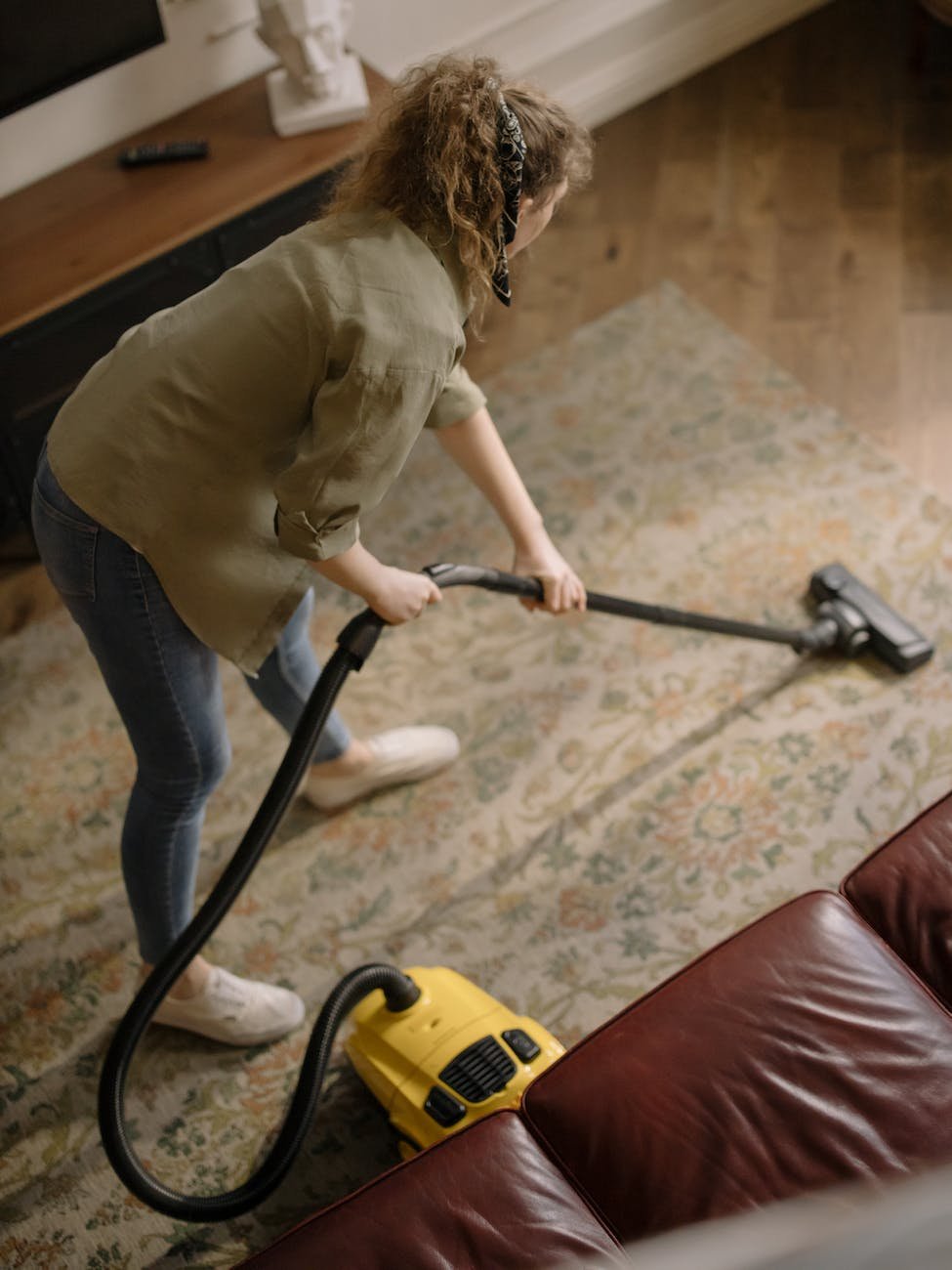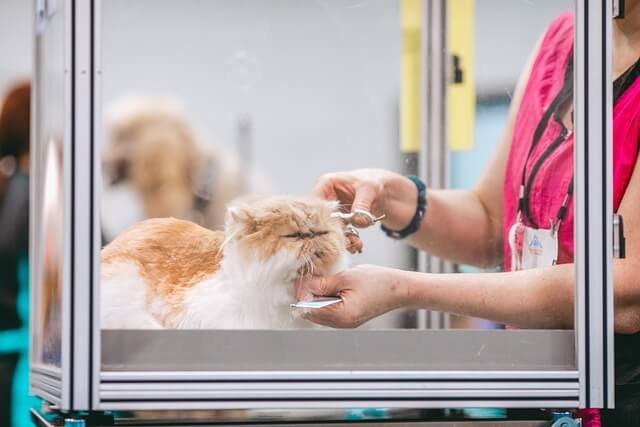If you are a pet lover, I’m sure you have kept one or two furry creatures in your house. Most of the common pets that you will find in most households in the US and globally are dogs, cats, rabbits, and birds. Pets offer unconditional love, emotional support, and great companionship during good or difficult moments. However, one of the main challenges that pet owners face is dealing with dander allergy because even the prettiest pet shed dander. Luckily, I have prepared this article to give you simple and practical tips on how to get rid of pet dander in your house.
Table of Contents
But…
What is pet dander?
Pet dander is tiny flecks of dead skin cells that are shed by pets with fur or feathers. Dander is similar to dandruff and it can either be microscopic or bigger enough to be seen by our naked eyes. Irrespective of the size, dog dander, rodent dander, cat dander, and bird dander pose serious health problems to many people due to dander allergy.
If you are allergic to pet dander or you have other family members who are allergic to pet dander, it’s advisable to take appropriate measures to ensure that you lessen exposure to such allergens. Luckily, there are many strategies that pet owners can use to get rid of pet dander in their homes without giving away their charming companions.
Since pet dander are tiny microscopic particles, it becomes very easy for them to land on any surface in your home thus, making it difficult to remove them. The trick is to keep pet dander at minimal levels if you can’t eliminate them completely. Doing so helps improve your indoor air quality thus, making it ideal for individuals prone to pet dander allergies.
How long does pet dander stay in a house?
Pet dander can stay in a house for four to six months after a pet has left home. Therefore, you can still experience pet dander allergic reactions if you happen to move to a new house that was previously occupied by a pet owner even if you don’t own one. Pet dander stays longer in your house as they are airborne making it easier for them to attach to any surface. Cats’ dander is known to stay longer than dogs’ dander as it is more airborne.

Why is pet dander a huge problem?
Recent statistics indicate that pet ownership increased to a new level where one in every five US households owns a pet. According to 2021-2022 pet ownership survey statistics conducted by the American Pet Products Association (APPA), 70% of American households are pet owners. The future forecast indicates that pet ownership is expected to continue increasing globally as more and more individuals appreciate the value that pets add to one’s household and personal life.
With such a high number of people owning pets, pet dander becomes a huge problem, especially for individuals who are affected by pet dander allergies. Pet dander contains a protein that causes allergic reactions.
To make matter worse, this protein responsible for causing allergic reactions is also present in the urine and saliva of these lovely furry animals. Therefore, when your pet urinates, the tiny droplets of urine that comes into contact with the skin get more protein which causes an allergic reaction.
Also, pet saliva contains this type of protein and it’s easily spread when pets groom themselves by licking their fur and skin.
When a person who is susceptible to allergic reactions is exposed to this protein which causes pet dander allergy, their body releases antibodies to fight the pet protein. Common symptoms exhibited by individuals suffering from pet dander allergy include;
- Sneezing
- Wheezing
- Itchy or watery eyes
- Coughing
- Runny nose
- Eczema
Long-term exposure to pet dander allergies can cause serious secondary infections such as sinusitis, bronchitis, ear infection, and asthma.
What is a pet dander allergy?
Pet dander allergy is an allergic reaction that most people experience when they come into contact with pets’ fur, dead skin, urine, and saliva. Pet dander is airborne and pets such as dogs, cats, and domestic birds can easily spread pet dander in the environment both on indoor and outdoor surfaces. People who experience allergic reactions as a result of exposure to pet allergens may experience symptoms such as wheezing, coughing, difficulty in breathing, and sneezing.
How do you get rid of pet dander?
Since pet dander is airborne, it makes it easy to spread and land on any surface in your home. Eliminating it completely can be impossible but you can keep it at minimal levels.
The following are the different strategies that you can use to get rid of pet dander in your house;
Deep clean your home
Cleaning your home frequently is the easiest method that you can use to minimize the accumulation of pet dander in your home. Start by dusting your home regularly using a damp cloth to trap dust and pet dander before it gets to the indoor air. Target areas in your home that are prone to dust such as furniture surfaces and windows.
Vacuum your house to clean the carpet and house furniture. Vacuum cleaners with HEPA (High-Efficiency Particulate Air) air filters are excellent at removing dog dander. To prevent the collected pet dander from getting back to your home hard services while vacuuming, use a micro-filter bag and always empty it before it gets full.

If you use rugs and carpets in your home, consider replacing them with other sustainable and easy-to-clean flooring solutions such as tiles and hardwood flooring. Carpets and rugs can easily trap a lot of pet dander which can be problematic if they are not vacuumed every so often.
If discarding your rugs and carpets is not an option, consider washing them regularly with plenty of hot water. Also, always clean pet accessories such as toys and pet clothing.
Declutter your home
Is your home congested with unnecessary stuff or poorly organized? It’s time to get things in order if you want to get rid of pet dander in your house. Assess your home accessories, personal items, pet items, and upholstery furniture to identify how you can arrange them in a proper manner that reduces exposure to pet dander accumulation.
Donate or dispose all your unused items to create a cleaner space and allow maximum indoor air circulation. By decluttering, you reduce hard surfaces and dark corners where pet dander easily sticks.
Groom your pet often
Wondering how to get rid of pet dander in your house? Bathing your pets more often is one of the easiest ways. Pets shed dead skin cells and they are responsible for causing pet dander allergies. Therefore, as you purpose to deep clean your house, it’s important not to ignore your pet’s hygiene.
Consider washing your pet on a weekly basis using approved pet-specific shampoo. Cleaning your pet often will go a long way in reducing the amount of pet dander in your house. In addition, brush your dog regularly and apply essential skin oils that nourish your pet’s fur and skin.

Once you are done grooming your pet, always wipe its skin and fur with a damp towel to clear any loose pet dander from the skin before allowing it inside your house.
Boost your pet’s health
A healthy pet sheds fewer dead skin cells. One of the easiest ways of boosting your pet’s health is by feeding it high-quality and nutritionally balanced meals. Engage your vet so that he/she can review your pet’s current health condition and your meal plan to advise accordingly.
Giving your pet omega 3 and omega 6 fatty acid supplements helps in nourishing their skin and overall health. Your vet should also advise you on the best mechanisms that you can put in place to ensure that you control common pet parasites such as fleas, mites, and ticks.
Common signs that can help you know if your pet has been infested by these parasites include frequent scratching, skin biting, and licking. All these scratching and skin licking increases the rate of dead skin shedding which in turn contributes to faster accumulation of pet dander in your home.
Use an air purifier
Since pet dander is airborne, it will easily contaminate your indoor air and increase your exposure to pet dander allergens. When you breathe this contaminated air, it increases allergic symptoms and you will start noticing an increase in breathing congestion, sore throats, and coughing. Luckily, an air purifier is all that you need to eliminate pet dander in the air.
True HEPA air purifiers contain HEPA air filters that are very effective in trapping tiny air contaminants including pet dander. There are different types of HEPA air purifiers you can purchase including portable True HEPA air purifiers to improve your indoor air quality.
Clean air ducts and replace air filters regularly
Your home HVAC system plays a great role in maintaining good indoor air quality. Air ducts and air filters capture multiple types of air pollutants including pet dander. If the air ducts are not frequently cleaned, they will clog and become inefficient with time. Air filters in the HVAC system also capture air contaminants and other debris and they can become ineffective if they are not replaced frequently as per the manufacturers’ recommendation.
Engage a professional HVAC technician to clean your air duct system to eliminate any clogging and improve its efficiency. You will notice positive changes in your indoor air quality after a successful air duct cleaning service has been done. You will also notice a reduction in monthly heating and cooling power bills as the air duct will now start operating optimally.
Always go for high-quality air filters that have a MERV rating of 10 and above when doing air filter replacement for an effective whole-house air filtration system. MERV-rating refers to the Minimum Efficiency Reporting Value that an air filter can attain.
Restrict pets from accessing specific spaces in your home
If there are areas in your home that are vulnerable to pet dander accumulation, consider restricting your pets from accessing those areas frequently. It can be in your bedroom, couches, garage, or any other place where it might be difficult for you to get rid of pet dander. If there are asthmatic members of your family, ensure that you restrict pets from accessing their bedroom or study areas.
Wrapping up on how to get rid of pet dander in your house
As long as you have a pet in your home, it’s completely impossible to eliminate 100% of pet dander in your house. However, you can prevent pet dander accumulation and keep it at minimal levels by following the above tips.
Keeping your pet healthy and clean should be your top priority as you employ other measures to minimize pet dander accumulation in your house. When you get rid of pet dander, you improve your indoor air quality and make it safe for persons who are sensitive to allergens such as pet dander and other indoor air contaminants.
Read Also;

